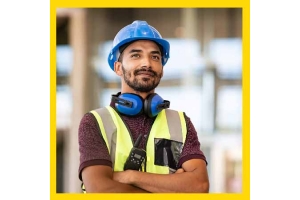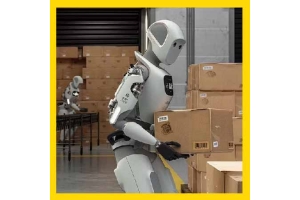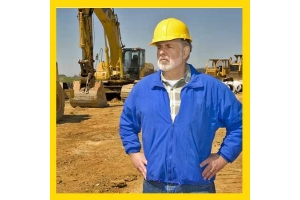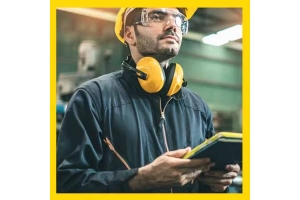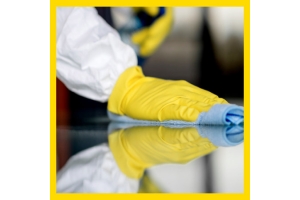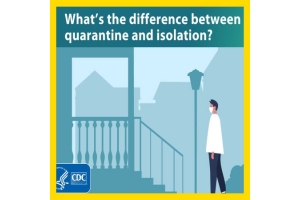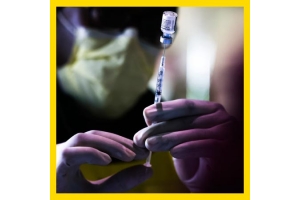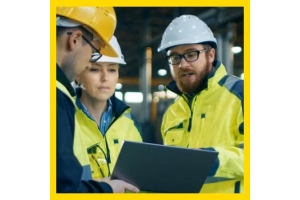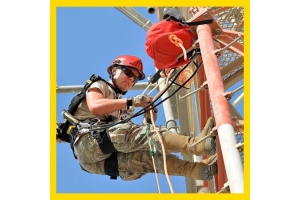Currency
-
-
July 29, 2018Clear visibility ahead
-
July 28, 2018
Recently Honeywell launched a new portable gas detector designed to keep workers safe in dangerous confined spaces. What makes this Gas Detector different than previous Gas Detectors from Honeywell?
According to Jacob Spector the new Honeywell BW™ Ultra Bluetooth-enabled Gas Detector was designed with confined space entry in mind. The BlueTooth capability enables managers to collect and track valuable data. The Honeywell BW™ Ultra Bluetooth-enabled Gas Detector allows companies to remotely monitor their employees’ safety, respond to emergencies faster and avoid costly downtime.
What gases is the Honeywell BW™ Ultra Monitor able to detect?
Jacob Spectors stated that the new Honeywell BW™ Ultra can monitor up to five different gases simultaneously, combining standard four-gas sensing capability for oxygen, carbon monoxide, hydrogen sulfide, and combustibles at the lower explosive limit (LEL), that can be customized with a choice of -
July 28, 2018Study finds failures to follow protocol
-
July 22, 2018Learn how to move away from manual, paper-intensive EHS workflows to achieve OSHA compliance.
-
July 21, 2018Recent advances in powered, full-body exoskeleton technologies are shining a new light on the subject of spine health and back injuries and are shaping up to be a viable solution.
-
July 18, 2018In 2016, one in five fatalities was in the construction industry.
-
July 17, 2018A standard aimed at helping employers reduce the risk of dropped objects incidents in industrial and occupational settings has been approved by the American National Standards Institute (ANSI).
Developed by the ANSI and the International Safety Equipment Association (ISEA), ANSI/ISEA 121-2018, American National Standard for Dropped Object Prevention Solutions establishes minimum design, performance, and labeling requirements for solutions and testing that mitigate this hazard.
Dropped object deaths, injuries on the rise
The standard comes in response to the thousands of workers each year in the U.S. who are injured — and the hundreds who die — from being struck by a falling object, such as hand tools, instrumentation, small parts, structural components and other items that have to be transferred and used at heights. In 2016, the Bureau of Labor Statistics reports there were 255 fatalities and 47,920 reported injuries from dropped objects -
July 14, 2018In this textile rental special, we look at the firefighting PPE care market, the role of managed care programmes and the implications of recent studies that detail of the dangers of prolonged exposure to contaminated PPE
There have been several studies detailing the dangers of prolonged exposure to contaminated PPE as the industry seeks to learn more about the carcinogens firefighters are exposed to on the job in an effort to identify what can be done to better protect them.
In our June issue of LCN, Richard Neale of LTC Worldwide will respond to a recent article in The Sunday Times that looked at the incidence of certain diseases among retired firefighters. His article will look at ways in which the launderer or garment rental operator can minimise those risks, which might be affected by inadequate cleansing, before re-use, of protective garments worn by firefighters.
According to the report in The Sunday Times (25 February), a study suggested that firefighters -
July 12, 2018Kelly Friel is a Digital Product Manager with tool and personal protective equipment supplier Zoro. In this article, she shares the essential PPE that workers in the agricultural sectors need to stay safe during farm work.
For all the joys of farming, it remains an extremely hazardous industry. It's a sobering fact that the agricultural sector represents only 1.8% of the UK workforce, but accounts for approximately 19% of reported fatalities every year — and the number of workers who lose their livelihoods to injuries and illnesses caused by farm work is higher still.
Additionally, accidents in the industry can take a big toll on businesses, causing high insurance premiums, damage to machinery, and reduced productivity and profits.
Farming is always going to involve an element of risk. The good news is that there are precautions you can take to help minimise the risk of an accident or injury, and this is where personal protective equipment comes in.
